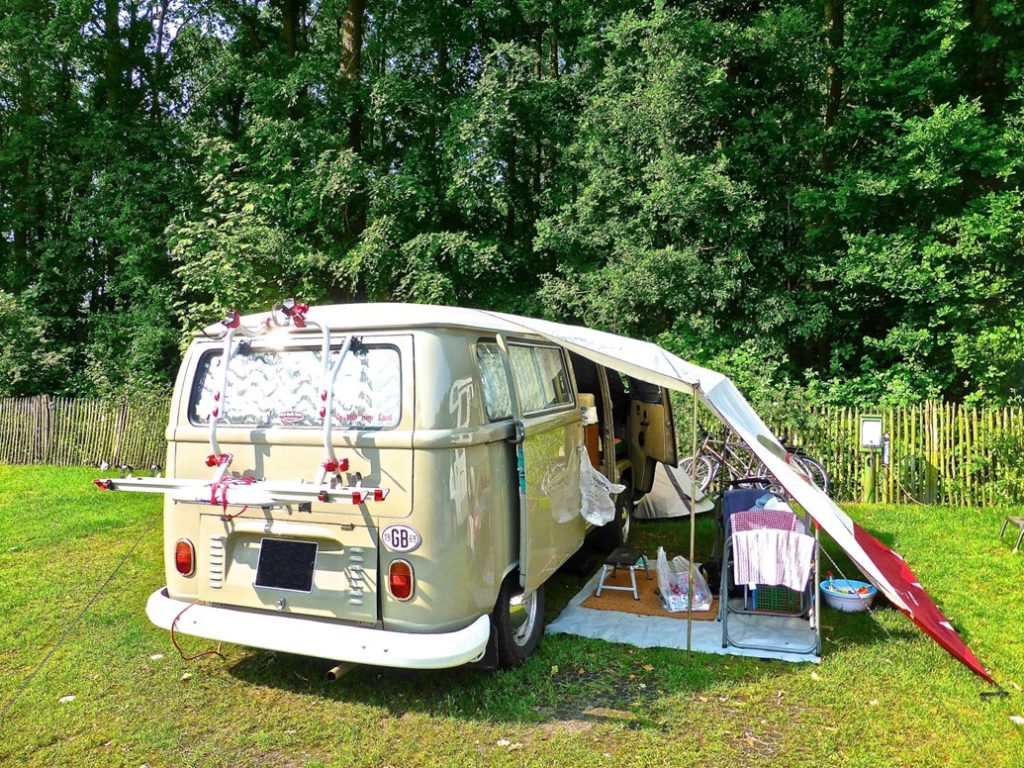What is a Leisure Battery?
A leisure battery is very different from the ones used alongside a vehicle’s engine, it is important to differentiate the two and realize that batteries are built differently for different purposes. Both can perform each other’s jobs but for a very short period as they will deteriorate at an accelerated level. A car battery has to deliver a high level of current to start the car; however, after the car starts, the current supplied to the battery recharges it. A leisure battery, on the other hand, has to deliver a small, steady amount of current consistently and can continue running even at a low charge thus, when going to purchase a battery for your camper, be specific about getting a leisure battery only.

There are 4 different types of batteries available in the market, each with its pros and cons that every buyer should be aware of before making the purchase. One thing that is consistent with all of them is to not use them below 50% charge as much as possible as it leads to battery damage and a reduction in its life.
Wet Cell Batteries: These are your basic, acid-filled batteries that need the cells to be submerged in battery water, if the water boils off and the plates are left exposed, the battery life will diminish significantly so it is a good idea to keep the fluid on hand, in your motorhome. A newer type, called a maintenance-free battery is also available but these also require a refill, just not as often. In hotter climates, the water tends to evaporate quickly and it might spill if knocked over.
Gel Cell Batteries: These are more expensive than wet cell ones however, they last for a longer period and require no maintenance. Emitting virtually no fumes, these are great for areas with no ventilation and there is a very low risk of leaking, corroding, or exploding. Although these are the safer form of batteries, on the flip side, they require special chargers and do not do very well in extreme heat and cold and their life expectancy decreases.
AGM Batteries: These are newer, hybrid batteries that can be used for both vehicle startup and also a steady release of energy. They’re a great option for motorhomes as they don’t lose charge from sitting idle. Lastly, they are great for extreme weather; more durable with a longer lifespan; however, they can be quite heavy and not suitable for all applications.
Lithium Batteries: With the highest capacity out of all of these batteries, Lithium batteries are safe, non-toxic, and the lightest. Leisure batteries by Eco Tree Lithium have the longest battery life and are more affordable than AGM batteries however, lithium batteries do not have any safety features built-in and have to be stored in a fireproof container as they are flammable, and recycling them is also quite costly.
How to use Leisure Batteries
Typically, depending on the size of your battery, it could be used for higher power electronics however, primarily; It should be used for appliances that require up to 12V however, you can purchase an inverter which, when connected to your battery, will allow you to power 240V electronics off of a 12V battery. This still should not be done for very long periods and all the appliances should be turned off when not in use as draining your battery fully does irreversible damage, and draining it below 50% regularly shortens the lifespan.

To get electricity in your camper, either a consumer unit or a zig unit needs to be installed. Caravans with pre-installed electrics have a consumer unit that has a fuse board and a circuit breaker for safety. These can be easily hooked to a hookup cable or a bank to allow more appliances to be powered. If you plan on using a lot of appliances on your battery, consider purchasing a trickle charger that automatically turns off after the battery is fully charged to keep your battery in optimum condition.
Some Tips
Try to find appliances with very low wattage to reduce the overall load on your battery; you don’t want to be stuck with an electronic that keeps causing the circuit to trip whenever you try to use it as most hookups cut out power supply if you try to draw more than 10 amps. While charging your batteries, make sure they are in a well-ventilated area as they start producing harmful fumes after they are fully charged. Although most caravans come with a carbon monoxide detector, it’s better to be on the safer side. Use a thin layer of Vaseline on the battery’s terminals to prevent oxidation and always use good quality clamps.

If you’re very lucky, you could get more than 6 years of use out of your battery with proper care. However, with so many factors reducing battery life, try not to get your hopes too high and go through too much of a hassle to reduce the battery life cycles used. The main thing to remember is to stay safe and enjoy your trip; the purpose of a leisure battery is to provide leisure after all.


